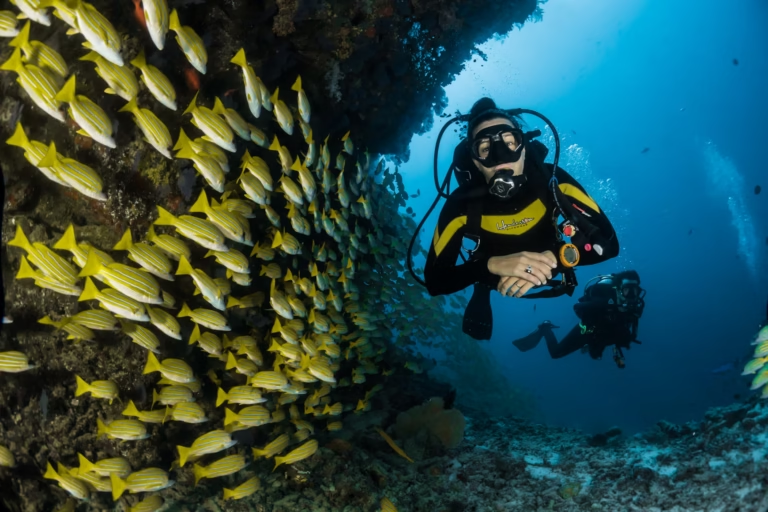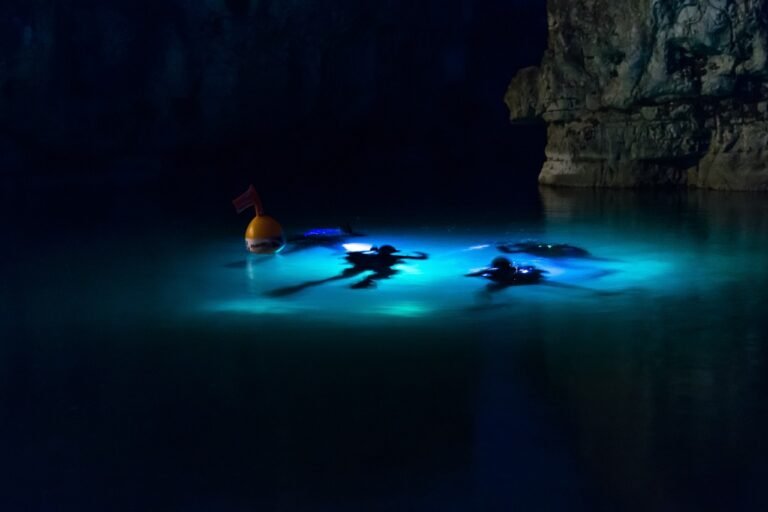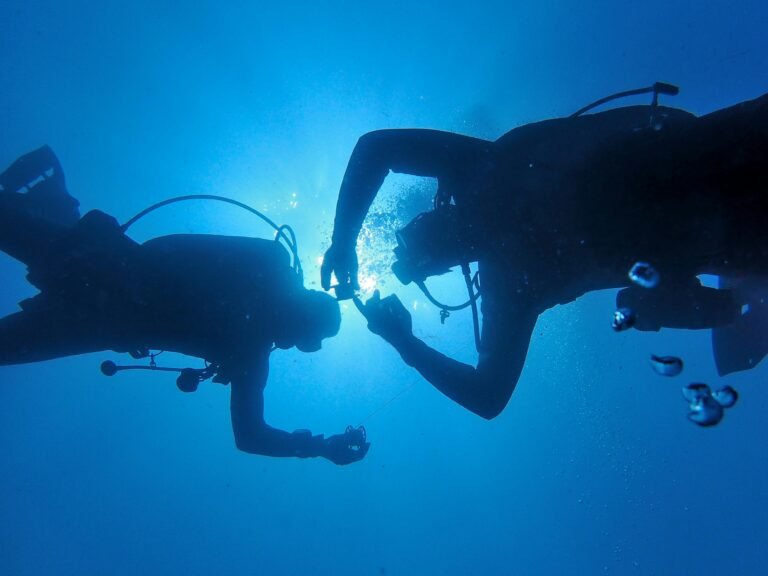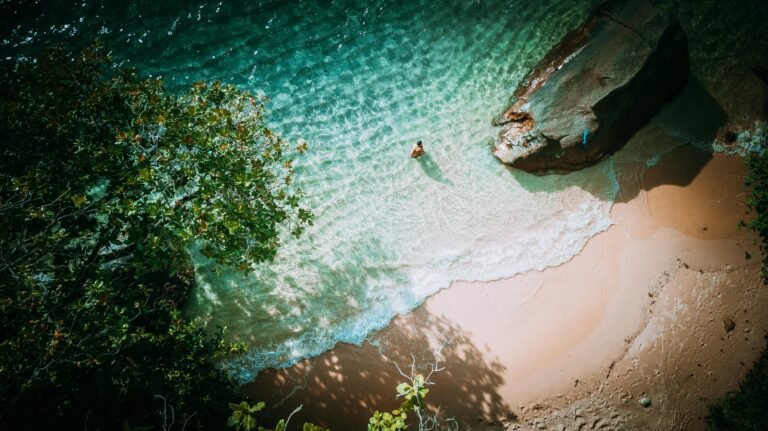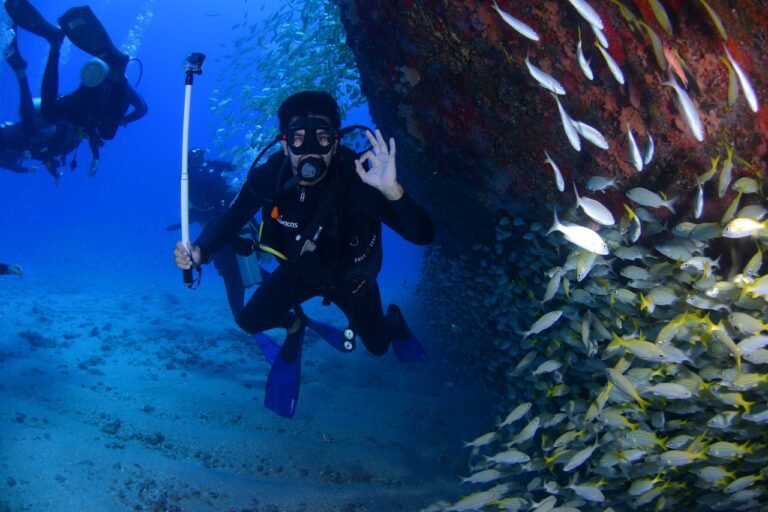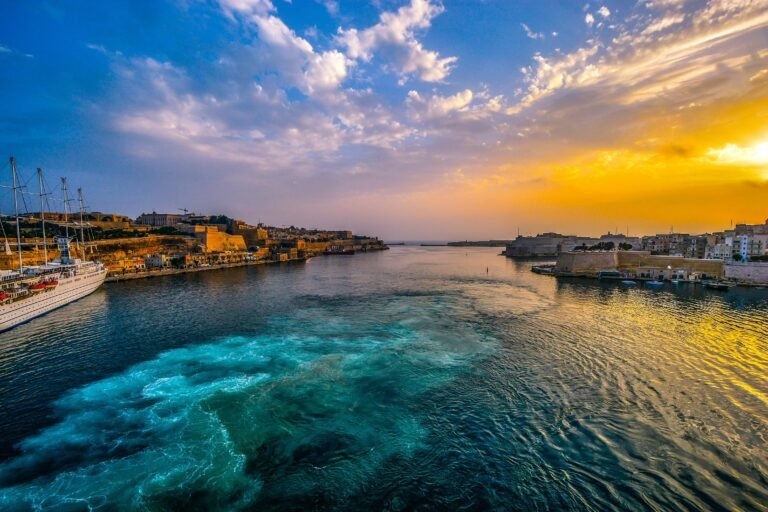The Best Scuba Diving Sites in the Belize Barrier Reef

The Belize Barrier Reef is one of the best places in the world for scuba diving. As the second-largest reef system on the planet, it’s like a playground for anyone who loves the ocean.
Imagine swimming through clear, warm waters, surrounded by colorful coral and hundreds of species of fish. If that sounds good, this is the place for you.
In this guide, I’ll walk you through everything you need to know: the best dive spots, when to visit, what marine life to expect, and tips to make your trip as smooth as possible.
Let’s dive in!
Why Dive in the Belize Barrier Reef?
The Belize Barrier Reef is a dream destination for divers of all levels. It offers a mix of stunning marine biodiversity, excellent conditions, and a variety of dive sites.
Here’s what makes it so special:
Incredible Marine Biodiversity
- Home to over 500 fish species and 100 coral species, it’s one of the most diverse ecosystems on the planet.
- You’ll encounter vibrant coral gardens, reef fish, and larger marine creatures like reef sharks, sea turtles, and eagle rays.
Excellent Water Conditions
- Clear Visibility: You can often see up to 30 meters (100 feet) underwater.
- Warm Waters: Comfortable temperatures year-round mean you’ll only need a light wetsuit.
Variety of Dive Sites for All Levels
- For Beginners: Shallow reefs like Hol Chan Marine Reserve provide calm waters and colorful marine life.
- For Advanced Divers: Sites like the Great Blue Hole and Half Moon Caye Wall offer deep, thrilling dives with unique underwater landscapes.
- Unique Experiences: Swim with nurse sharks and rays at Shark Ray Alley, or explore remote, untouched coral reefs at Glovers Reef Atoll.
Accessibility for All Divers
- Beginner-Friendly Options: Plenty of easy sites with shallow depths and calm waters.
- Advanced Challenges: Opportunities for deep-diving enthusiasts to test their skills in iconic locations like the Great Blue Hole.
Top Dive Sites in the Belize Barrier Reef
Great Blue Hole (Lighthouse Reef Atoll)
The Great Blue Hole is one of the most iconic dive sites on Earth, and a centerpiece of Belize’s underwater world. Located in the Lighthouse Reef Atoll, this massive marine sinkhole is part of the Belize Barrier Reef Reserve System, a UNESCO World Heritage Site.
This natural wonder is a nearly perfect circle, spanning 300 meters (984 feet) across and plunging to depths of over 120 meters (394 feet). Its dramatic underwater features, combined with the thrill of deep diving, make it a bucket-list experience for scuba enthusiasts.
Diving Highlights
- Stalactite Caverns: At 30–40 meters, you’ll find limestone stalactites hanging like chandeliers, hinting at the cave’s ancient history.
- Sharks: Expect encounters with reef sharks and, occasionally, hammerheads cruising through the deep waters.
- Sheer Depths: For many, the thrill lies in exploring beyond the reach of natural light, where the world seems to dissolve into endless blue.
Marine Life to Expect
- Sharks: Reef sharks are common, while bull sharks and hammerheads are sometimes seen at deeper levels.
- Smaller Fish: The rim of the sinkhole has a shallow reef teeming with angelfish, groupers, and other reef species.
- Coral: The shallow surrounding areas host vibrant coral, although the sinkhole itself has limited coral growth due to its depth.
Who It’s Best For
- Advanced Divers: The depth and occasional currents make this site ideal for experienced divers with deep-diving certifications.
- Intermediate Divers: May also enjoy the rim and surrounding reef areas but will need a guide for deeper exploration.
Tips for Diving the Great Blue Hole
- Be Prepared for Depth: A deep-diving certification is essential for this site. Ensure you’re comfortable with descending quickly and managing your air efficiently.
- Morning Dives are Best: Early dives often mean calmer conditions and better visibility.
- Gear Up: Bring or rent a dive computer to safely monitor your depth and bottom time. A light wetsuit (3mm) is sufficient for the warm waters.
- Choose the Right Operator: Look for eco-certified operators offering experienced guides and small group sizes to ensure safety.
Liveaboard vs. Day Trip
- Liveaboard: The best way to experience the Great Blue Hole and nearby dive sites is via a liveaboard. It allows you to visit remote areas like Half Moon Caye Wall and Long Caye Ridge as part of a multi-day trip.
- Day Trip: Available from popular mainland hubs like San Pedro or Caye Caulker, these trips often include additional dives at nearby reefs.
The Great Blue Hole is more than just a dive; it’s an adventure that blends natural beauty with the thrill of exploration. Diving here is like stepping into another world—a humbling reminder of the mysteries hidden beneath the ocean’s surface.
Half Moon Caye Wall
Half Moon Caye Wall is one of the most breathtaking dive sites in Belize, located within the Lighthouse Reef Atoll and just a short distance from the Great Blue Hole. It’s famous for its stunning underwater scenery, vibrant coral reefs, and rich marine biodiversity.
This site combines dramatic vertical walls with a shallow sandy plateau, making it a favorite among divers of all skill levels.
Diving Highlights
- The Coral Wall: Descending along the wall, you’ll find an explosion of life—schools of parrotfish, angelfish, and groupers weave through forests of coral and sea fans.
- Sharks and Rays: Reef sharks are a common sight, often cruising just off the wall. Eagle rays frequently glide by, adding to the magic of the dive.
- The Sandy Plateau: The shallower section of the dive features garden eels poking out of the sandy bottom, along with colorful corals and sponges.
Marine Life to Expect
- Fish Species: Snappers, angelfish, groupers, and butterflyfish are abundant.
- Larger Marine Life: Expect to see reef sharks, eagle rays, and occasionally sea turtles.
- Coral and Sponges: A vibrant mix of hard and soft corals, barrel sponges, and gorgonian sea fans adorn the walls.
Who It’s Best For
- Beginner Divers: The sandy plateau at shallower depths offers calm conditions and easy exploration.
- Intermediate and Advanced Divers: The vertical walls and chance encounters with larger marine life make this site exciting for more experienced divers.
Tips for Diving Half Moon Caye Wall
- Bring a Camera: The stunning coral formations and abundance of marine life make this a great spot for underwater photography.
- Stay Alert for Currents: While the area is generally calm, mild currents can occur along the wall.
- Take a Break on the Caye: Many dive operators include a surface interval on Half Moon Caye, where you can explore its pristine beaches and seabird sanctuary.
Best Way to Visit
- Day Trips: This dive is usually included in day trips to the Lighthouse Reef Atoll, often paired with the Great Blue Hole.
- Liveaboards: A liveaboard trip offers more time to explore the site and nearby locations like Long Caye Wall and Silver Caves.
Half Moon Caye Wall is a must-dive for anyone visiting Belize. Its vibrant coral walls, abundance of marine life, and tranquil setting make it one of the most memorable underwater experiences you’ll ever have.
Hol Chan Marine Reserve
Hol Chan Marine Reserve is one of Belize’s most accessible and beginner-friendly dive sites. Located near Ambergris Caye and Caye Caulker, it’s part of a protected marine park known for its shallow coral reefs, abundant marine life, and clear, calm waters.
Hol Chan, which means “Little Channel” in Mayan, centers around a natural cut in the reef that’s teeming with life.
Diving Highlights
- The Channel: The main attraction is a natural cut in the reef filled with vibrant coral and schools of fish, including snapper, grunt, and parrotfish.
- Coral Gardens: Surrounding the channel are expansive coral gardens with brain coral, elkhorn coral, and sponges, home to a variety of smaller creatures like lobsters and crabs.
- Shark Ray Alley: In this shallow area, you can dive or snorkel among friendly nurse sharks and stingrays. It’s a great spot for first-time encounters with larger marine animals.
Marine Life to Expect
- Fish Species: Snapper, parrotfish, grunts, angelfish, and sergeant majors are common.
- Larger Marine Life: Nurse sharks, stingrays, and the occasional green sea turtle can be spotted.
- Coral: Healthy hard and soft coral formations create a colorful underwater landscape.
Who It’s Best For
- Beginners: The calm waters and shallow depths make this an ideal site for those new to diving.
- Snorkelers: Hol Chan is one of the best snorkeling spots in Belize, offering incredible views of marine life even from the surface.
- Experienced Divers: While it’s shallow, the variety of marine life and coral formations make it a rewarding dive for all levels.
Tips for Diving Hol Chan Marine Reserve
- Go Early: Arrive in the morning to avoid crowds, especially at Shark Ray Alley.
- Bring Reef-Safe Sunscreen: Protect the coral and marine life while keeping yourself safe from the sun.
- Practice Good Buoyancy: The shallow depths mean it’s crucial to avoid damaging the reef with careless fin kicks.
Best Way to Visit
- Day Trips: The reserve is just a short boat ride from both San Pedro and Caye Caulker, making it easy to visit as part of a half-day or full-day trip. Many operators combine Hol Chan with other nearby sites like Mexico Rocks or Bacalar Chico.
Hol Chan Marine Reserve offers an easy, colorful, and relaxing dive experience. Its shallow depths, thriving marine life, and proximity to Belize’s top tourist hubs make it a must-visit spot for divers and snorkelers alike.
Turneffe Atoll
Turneffe Atoll is the largest of Belize’s three atolls and one of the most biodiverse diving areas in the region. Located about 32 kilometers (20 miles) east of Belize City, this massive atoll spans 48 kilometers (30 miles) long and 16 kilometers (10 miles) wide, with over 200 cayes scattered within its lagoon.
Its combination of coral reefs, mangroves, and seagrass beds supports an incredible variety of marine life, making it a paradise for divers of all skill levels.
Diving Highlights
- The Elbow: A world-class dive site located at the southern tip of the atoll, The Elbow is famous for its strong currents that attract schools of jacks, snapper, and barracudas, as well as larger pelagic species like reef sharks and eagle rays.
- Coral Gardens: Turneffe’s shallow reefs are perfect for spotting vibrant coral formations, anemones, and smaller marine life like seahorses and nudibranchs.
- Tunnels and Swim-Throughs: The reef is riddled with caverns, crevices, and tunnels, offering exciting exploration opportunities for advanced divers.
Marine Life to Expect
- Fish Species: Angel fish, parrotfish, groupers, and snappers are common.
- Larger Predators: Reef sharks, nurse sharks, barracudas, and sometimes even dolphins.
- Macro Life: Seahorses, pipefish, and shrimp are often found hiding among the coral.
- Unique Species: Turneffe is one of the best places to spot spotted eagle rays and occasionally manatees near the mangroves.
Who It’s Best For
- Beginner Divers: Shallow coral gardens and calm lagoons are perfect for those new to diving.
- Advanced Divers: Sites like The Elbow, with its strong currents and pelagic species, are better suited for experienced divers looking for a challenge.
- Underwater Photographers: The biodiversity and clear waters make this a dream destination for capturing both macro and wide-angle shots.
Tips for Diving Turneffe Atoll
- Consider a Liveaboard: Turneffe Atoll’s remote location makes it an excellent destination for liveaboard trips, which allow divers to explore multiple sites over several days.
- Bring a Dive Light: Many sites feature tunnels and caverns where a light will help you fully appreciate the vibrant colors and hidden creatures.
Best Way to Visit
- Day Trips: Many dive operators in Belize City, Ambergris Caye, and Caye Caulker offer day trips to Turneffe Atoll.
- Liveaboards: For a more immersive experience, book a liveaboard that includes Turneffe in its itinerary, along with sites like the Blue Hole and Lighthouse Reef.
Turneffe Atoll offers something for everyone, from relaxing dives in shallow coral gardens to adrenaline-filled encounters with larger marine life at The Elbow. It’s a must-visit for anyone looking to experience Belize’s incredible underwater biodiversity.
Glovers Reef Atoll
Glovers Reef Atoll is a diver’s paradise, known for its remote location, pristine reefs, and rich marine biodiversity. Situated approximately 45 kilometers (28 miles) off the coast of southern Belize, this UNESCO World Heritage Site offers some of the most untouched and breathtaking diving experiences in the region.
Its isolation and careful conservation make it one of the most rewarding spots for divers seeking an off-the-beaten-path adventure.
Diving Highlights
- The Walls: Glovers Reef is known for its dramatic drop-offs, where colorful coral walls plunge into the deep blue, attracting larger species like reef sharks and eagle rays.
- Swim-Throughs and Tunnels: Many dive sites feature intricate swim-throughs and underwater tunnels, perfect for advanced divers looking for a little adventure.
- Coral Gardens: The shallow reefs are vibrant and diverse, making them ideal for spotting small marine creatures and for less experienced divers.
Marine Life to Expect
- Fish Species: Schools of angelfish, butterflyfish, groupers, and snappers are common throughout the atoll.
- Larger Species: Nurse sharks, reef sharks, eagle rays, and dolphins are frequently seen here.
- Coral and Sponges: The reefs are covered with healthy coral, sea fans, and sponges, creating a colorful underwater landscape.
- Seasonal Highlights: Whale sharks can sometimes be spotted near Glovers Reef during their migration season (April–June).
Who It’s Best For
- Experienced Divers: The wall dives and tunnels require good buoyancy control and experience with deeper dives.
- Beginners: Shallow coral gardens and sandy plateaus offer calm, safe conditions for newer divers.
- Adventurous Divers: Its remote location and unique underwater topography make it perfect for those seeking an exclusive diving experience.
Tips for Diving Glovers Reef Atoll
- Plan for Remote Conditions: Being far from the mainland, dive trips to Glovers Reef require proper planning. Pack everything you might need, including dive gear, sunscreen, and snacks.
- Stay on the Atoll: Many dive lodges and eco-resorts are based on small islands within the atoll, offering divers easy access to the best sites.
- Consider a Liveaboard: For the ultimate diving experience, liveaboards often include Glovers Reef in their itineraries, along with other remote locations like Lighthouse Reef Atoll.
Best Way to Visit
- Eco-Resorts: Stay at a dive lodge on one of the cayes within the atoll for convenient access to multiple dive sites.
- Liveaboards: These trips allow you to fully explore the remote beauty of Glovers Reef while diving at different sites daily.
- Day Trips: Fewer operators offer day trips due to its distance from the mainland, but they are possible from southern Belize locations like Placencia or Hopkins.
Glovers Reef Atoll is the ultimate destination for divers who crave adventure and solitude. Its vibrant reefs, diverse marine life, and secluded location create an unforgettable diving experience.
Marine Life in the Belize Barrier Reef

The Belize Barrier Reef is one of the most biodiverse ecosystems in the world, offering a mesmerizing array of marine life.
From tiny, colorful reef fish darting through coral gardens to larger pelagic species like sharks and rays, every dive in this underwater paradise is full of surprises. Whether you’re exploring shallow reefs or dramatic drop-offs, the reef’s marine life will captivate you.
Fish Species
The reef is home to an incredible variety of fish, each playing its part in the ecosystem.
- Reef Fish: Expect to see angelfish, butterflyfish, parrotfish, snappers, and groupers weaving in and out of the coral. Their vibrant colors and patterns make every dive a feast for the eyes.
- Schooling Fish: Large schools of grunts, barracuda, and jacks are often spotted near walls and channels, adding energy to the underwater scenery.
- Unique Species: Keep an eye out for curious creatures like trumpetfish, scorpionfish, and even the occasional seahorse hiding among the coral.
Larger Marine Life
For many divers, encounters with bigger species are the highlight of their trip.
- Sharks: Reef sharks and nurse sharks are common in the area, and hammerheads or bull sharks can occasionally be spotted near deeper sites like the Great Blue Hole.
- Rays: Graceful eagle rays and stingrays are frequently seen gliding along the sandy bottom or near walls.
- Sea Turtles: Green and hawksbill turtles are often found grazing on seagrass beds or swimming near coral formations.
- Dolphins: Pods of playful dolphins sometimes appear during surface intervals or dives at remote sites like Turneffe or Glovers Atoll.
Coral Reefs
The reef itself is an essential part of the ecosystem, providing shelter and food for countless marine species.
- Hard Coral: Elkhorn, brain, and staghorn corals dominate the reef, forming a strong foundation for the ecosystem.
- Soft Coral: Vibrant sea fans and anemones sway in the currents, adding movement and color to the underwater landscape.
- Sponges: Barrel and tube sponges in various shapes and sizes create additional habitats for small fish and invertebrates.
Seasonal Highlights
The Belize Barrier Reef is worth visiting year-round, but certain seasons bring unique marine life experiences.
- Whale Sharks: From April to June, these gentle giants migrate to the waters near Gladden Spit, where they feed on spawning fish. Diving or snorkeling with whale sharks is a bucket-list experience.
- Spawning Fish: During the same months, you’ll see massive gatherings of snapper and other fish species as they prepare to spawn, attracting sharks and other predators.
Best Time to Dive in the Belize Barrier Reef

The Belize Barrier Reef is a year-round diving destination, but understanding the seasonal variations can help you plan your trip for optimal conditions and unique wildlife encounters.
With warm waters, excellent visibility, and vibrant marine life, you’ll enjoy diving no matter when you go, but some seasons stand out for specific experiences.
High Season: November to May
This is the dry season in Belize, making it the most popular time for diving.
- Weather: Sunny skies and cooler temperatures (25–28°C or 77–82°F) create ideal conditions for both diving and exploring the mainland.
- Water Conditions: Calm seas and excellent visibility of up to 30 meters (100 feet) are common during this time.
- Crowds: Dive sites can be busier, particularly near popular spots like Hol Chan and Shark Ray Alley. Booking accommodations and tours in advance is recommended.
- Marine Life: Expect vibrant reefs, schooling fish, and a good chance of seeing turtles and reef sharks.
Whale Shark Season: April to June
One of the most magical times to dive in Belize is during the whale shark migration.
- Gladden Spit: This area near Placencia becomes a hotspot as whale sharks gather to feed on fish spawn.
- Dive Experience: Special tours are available to snorkel or dive with these gentle giants. Encounters are not guaranteed, but when they happen, they are unforgettable.
- Weather: Late April through early June overlaps with the dry season, offering good conditions for diving.
Low Season: June to October
The low season corresponds to Belize’s rainy season, which is also the hurricane season. While it’s less busy, it’s still possible to enjoy diving.
- Weather: Afternoon showers are common, and there’s a higher risk of storms. Temperatures are warmer, ranging from 27–31°C (81–88°F).
- Water Conditions: Visibility may be reduced to around 15 meters (50 feet) due to runoff and heavier rainfall. However, marine life remains active and abundant.
- Crowds: Fewer tourists mean dive sites are less crowded, and accommodations often offer discounted rates.
- Marine Life: The reef is still alive with activity, and the calmer days can offer excellent conditions for exploring less-visited sites.
When to Go for Specific Experiences
- Whale Sharks: Plan for April to June during their migration near Gladden Spit.
- Best Visibility: February to May during the dry season, when water clarity is at its peak.
- Budget-Friendly: Travel during the low season (June to October) for discounts and quieter dive sites, but keep an eye on the weather.
Tips for Timing Your Dive Trip
- Check the Weather: Stay updated on the forecast, especially during the hurricane season (June to October).
- Book Early: If visiting during the high season, secure your dive operator, accommodations, and liveaboards well in advance.
- Be Flexible: Even during the rainy season, morning dives often have calm seas and better visibility.
Tips for Diving the Belize Barrier Reef

Diving the Belize Barrier Reef is an extraordinary experience, but preparation is key to making the most of your trip.
Whether you’re a seasoned diver or a beginner, these practical tips will help ensure a safe, enjoyable, and eco-friendly adventure.
Certification Levels and Recommendations
The Belize Barrier Reef offers dive sites for all skill levels, but it’s important to choose locations suited to your experience.
- Beginner-Friendly Sites: Shallow, calm areas like Hol Chan Marine Reserve are perfect for new divers or those seeking relaxed dives.
- Advanced Sites: Deep dive locations like the Great Blue Hole or current-heavy spots like The Elbow at Turneffe Atoll are best for divers with advanced certifications and experience in managing buoyancy and air consumption.
- Special Certifications: Some operators require deep-diving or drift-diving certifications for specific sites, so check requirements before booking.
Gear and Packing Essentials
Packing the right gear and supplies will make your dives more comfortable and enjoyable.
- Wetsuit: A 3mm shorty wetsuit is ideal for Belize’s warm waters (27–29°C or 81–84°F). For deeper dives or cooler months, a full 3mm wetsuit might be more comfortable.
- Dive Computer: Essential for tracking depth and bottom time, especially on dives like the Great Blue Hole.
- Reef-Safe Sunscreen: Protects both your skin and the fragile coral ecosystem. Belize enforces strict conservation measures, so avoid sunscreens with harmful chemicals like oxybenzone.
- Underwater Camera: Capture memories of the stunning coral and marine life, but remember to use it responsibly without disturbing wildlife.
- Extras: A dry bag for your boat trip, a surface marker buoy (SMB) for safety, and a hat for sun protection during surface intervals.
Choosing a Dive Operator
Selecting the right operator can make or break your diving experience.
- Small Group Sizes: Opt for operators that limit group sizes to ensure a safer, more personalized dive experience.
- Experienced Guides: Knowledgeable dive masters familiar with local conditions can enhance your trip by pointing out marine life and ensuring safety.
- Liveaboard Options: For those wanting to explore remote sites like Glovers Reef Atoll or Lighthouse Reef Atoll, liveaboard trips are a great way to maximize dive time and experience lesser-visited locations.
Plan for Weather and Conditions
The reef’s conditions can vary by season and location.
- Morning Dives: Water tends to be calmer and visibility better in the morning.
- Seasonal Considerations: Dry season (November–May) offers the most consistent conditions, while rainy season (June–October) may bring reduced visibility and occasional storms.
- Monitor Forecasts: Keep an eye on the weather, especially during hurricane season, and consult with your dive operator if conditions seem uncertain.
Conclusion
The Belize Barrier Reef is a top diving spot, full of marine life and colorful coral. Beginners can explore shallow areas like Hol Chan Marine Reserve, while experienced divers can tackle challenges like the Great Blue Hole.
You’ll see everything from vibrant fish to reef sharks and eagle rays. Remote spots like Glovers Reef Atoll offer pristine conditions, and Turneffe’s Elbow brings exciting strong currents for seasoned divers.
For the best experience, visit between April and June to swim with whale sharks or during the dry season for clear, calm waters. Whether you’re after adventure or nature, the Belize Barrier Reef won’t disappoint.
Pack your gear and dive in!

